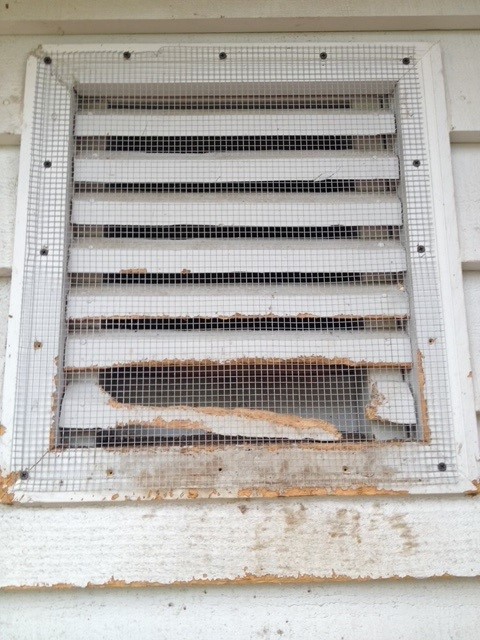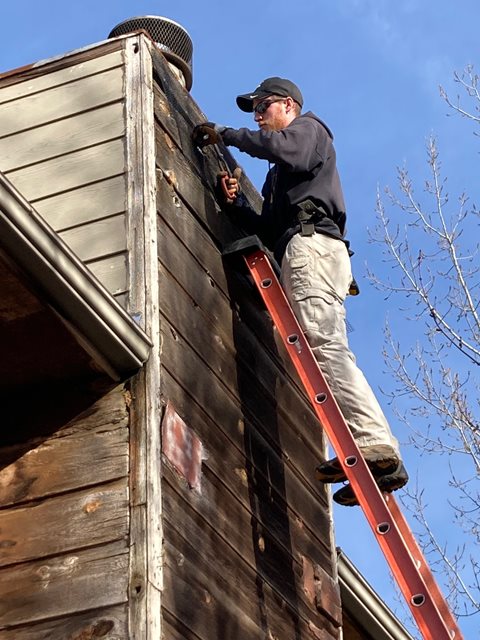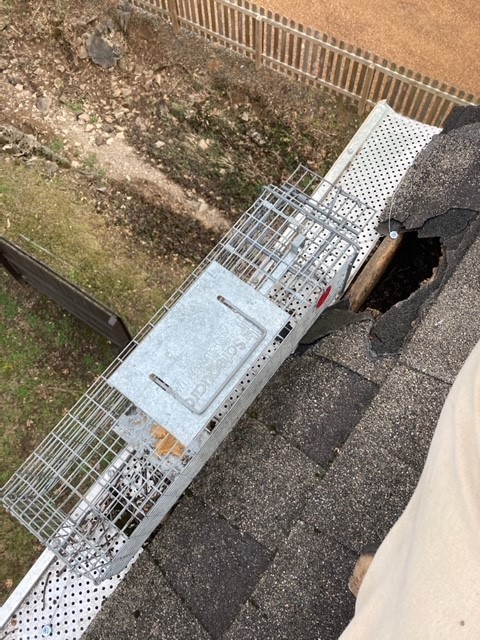Squirrels are energetic, bushy-tailed rodents found all over the world except Australia and Antarctica. Opinions about squirrels vastly differ. Some think they are adorable and will watch them in the park or even feed them, while others consider them a nuisance.
There are more than 200 species of squirrels that are categorized into three main types: tree squirrels, ground squirrels, and flying squirrels.
Tree squirrels live in trees. Ground squirrels dig systems of tunnels underground. Flying squirrels live in tree holes or nests they make in crooks of branches. Flying squirrels cannot actually fly; they spread a muscle membrane between their legs and body to glide in the air. Because they can glide up to 160 feet, it looks like they are flying.
Squirrels are rodents, but in a different suborder than rats or mice. They are closely related to prairie dogs, chipmunks, and marmots. And unlike rats and mice who are nocturnal, squirrels are diurnal.
Why Are Squirrels in Your House or on Your Property?
Because squirrels are everywhere, it’s hard not to have some on your property, especially if you have trees. Trees supply squirrels with a home, acorns or other nuts, and cover from predators.
Squirrels have become used to living among people. Urbanization and the fragmentation that our intersecting roads have created make it necessary for squirrels to live among us when wooded areas and forests are not within proximity.
Once squirrels are on your property, coming inside your house is a natural extension. Your house represents a safe haven for squirrels, especially during mating season when they need to make a nest for their young. Your attic, chimney, or crawlspace is safe and provides them with warmth in harsh weather.
Signs of Squirrels
While we’re aware of all the squirrels around us when outside, we’re not always aware that they’ve come into our home. Because squirrels inflict costly damage and carry parasites and diseases, we need to be just as aware of these rodents as we are of mice and rats.
Although they are all rodents, signs of squirrel trouble are different than that of rats and mice:
- Noises in the attic or in the walls, during the day or at dusk and dawn. Scratching, scurrying, and squeaking are all noises associated with squirrels. This is the most important sign because you will probably hear squirrels before you see another type of visual evidence.
- Squirrel droppings in and around the house. Squirrel droppings may be hard to recognize. They look similar to bat droppings. This is something a trained nuisance wildlife specialist would be able to confirm for you. Animal droppings are a sign of a possible infestation and should be investigated, as the feces of rodents and bats carry disease.
- Chewing damage on the outside of your home on the roofline, soffits, or shingles. The front teeth of squirrels continue to grow throughout their lives. They are sharp and are kept at a manageable length by the squirrel’s constant gnawing. They can chew through roofing materials and even metal.
- A foul smell coming from the attic, chimney, or crawlspace. If a squirrel has made a nest in your home, the smell of the accumulation of urine and feces will penetrate your living area.
- Yard damage is another hallmark of squirrel trouble. And you might even be able to catch them in the act. Squirrels will dig up the lawn for nuts, chew on the bark of trees and the twigs of your shrubs, dig up bulbs, and eat fruit off your trees and vegetables from your garden.
Problems Squirrels Cause
If you suspect you have squirrels in your house, it’s imperative to get rid of squirrels as quickly as possible because the damage they create is costly and sometimes dangerous.
Squirrels are determined creatures and will chew and rip their way into your attic, creating a hole that can let rain and snow enter. Once inside, they will continue gnawing on wood, tearing insulation to use for their nests, and chewing on wires. These chewed wires create a fire hazard. In addition, they will defecate, and this causes rot as well as a health concern. Squirrels also carry parasites such as ticks, mites, and fleas that can infest your home.
Typical Places Squirrels Are a Problem
As you’ve probably already gleaned, squirrels are a problem both inside and outside of your home. The most common places to find squirrel problems inside are in the attic and chimney. Outdoor areas that may see damage include the roof and the yard, such as in your garden, trees, and lawn.
How To Get Rid of Squirrels From Your Attic
If you suspect squirrels in your attic, the best defense is to call a Critter Control wildlife specialist. Getting rid of squirrels on your own can be tricky and dangerous. Squirrels are smart, aggressive, and can transmit disease.
Squirrel Trapping
Trapping is often challenging because squirrels are not only fast but can get into very small spaces to hide. Juvenile squirrels can be captured and relocated along with the parent squirrel.
One-way Doors
One-way doors are one of the best ways to eradicate squirrels. These allow squirrels to leave but not to reenter. Once their entry points are repaired and all the weaknesses in the roof sealed, the one-way door is employed.
Exclusions
Exclusion methods are used to keep squirrels and other nuisance wildlife from entering your home. Some measures to take in this effort include removing trees and branches close to your roof that provide easy access. Sealing all vulnerabilities in your roof, soffits, vents, and chimney are also important.
Remediation and Clean-Up
Whether in your attic, chimney, crawlspace, or warehouse, Critter Control repairs all spaces to their original condition upon eradication. Insulation is replaced, wires are repaired, and the entire space is cleaned and sanitized.
How to Get Rid of Squirrels From Your Roof
Live Traps
Squirrels are territorial, so if you have too many squirrels running around your roof, it’s only a matter of time before they get inside. Live trapping and relocation are solutions. Critter Control specialists are fully trained in local and state laws concerning relocating squirrels.
Trim Branches
Trees and branches close to your home are how the squirrels hop onto your roof. Trimming these branches restricts the access squirrels have to your home.
Other places squirrels cause problems
Chimneys
Walls
Ventilation
Gutters
Crawlspaces
How To Get Rid of Squirrels on Trees
If you have lots of squirrels scampering around your yard, you may think a solution is controlling the number of squirrels in your trees. Keeping squirrels out of your trees is time-consuming and largely ineffective. Like all animals that live in proximity to us, they are looking for food and water.
Limit Food Sources
The best way to control squirrels on your property is to take down bird feeders, use mesh around fruit and vegetables, and do not feed pets outdoors where squirrels have access to their food and water.
California Ground Squirrels
California ground squirrels, also known as Beechey ground squirrels, live throughout California, Oregon, Nevada, and Washington. They live in burrows, creating extensive tunnels under the ground. These squirrels can not only be a nuisance to homeowners but also to farmers as well, where they eat crops, including vegetables, orchard fruit, and vineyard grapes. In colder areas, they hibernate, and in hotter areas, they retreat to their burrows, where they spend dormant periods.
Ground Squirrel Control
Ground squirrel control is tricky at best. Critter Control can provide effective and humane trapping systems that both abide by state and local ordinances and will not trap other types of wildlife. Some squirrels are considered fur-bearing game animals and require a license to trap. In some places, it is illegal to relocate squirrels to other areas because of the risk of spreading disease.
DIY Squirrel Prevention
While it is impossible to free your yard of all squirrels, there are simple DIY tactics that will make your yard and home less attractive to squirrels.
Limit Foods Sources
Tree, ground, and flying squirrels are all driven by their search for food. When food sources are limited, they will look elsewhere for food. Since squirrels make their home close to their food source, it stands to reason that if food sources are limited in your yard, they will make their nest elsewhere. Bird food is also squirrel food. Eliminating bird feeders is one of the best DIY tasks for discouraging squirrels. Even squirrel-resistant feeders attract squirrels to the seeds and nuts that fall to the ground as birds eat. Another way to limit food is to keep pet food and water indoors.
Trim Trees
Trimming tree branches that overhang your home is an effective way to limit squirrel access to your roof and chimney.
Keep Your Roof in Good Repair
Keeping your roof in good repair is an effective way to dissuade squirrels and other nuisance animals from getting inside and, in general, a good idea to prevent home leaks and keep in the warmth.
The Benefits of Using a Nuisance Wildlife Company
To keep squirrels away in a way that is humane and limits your exposure to the harm of aggressive squirrels, it is best to leave squirrel control to the experts at Critter Control. Critter Control will not only eliminate the squirrels but will eliminate the ways they are entering your home, as well as repair and sanitize your home from the damage and mess they made.
Squirrel Removal Near You
See how the professionals at Critter Control get rid of squirrels.
| Critter Control of Altanta | Critter Control of Central Missouri |
 | 480×640 jpg  |
| Squirrel Trapping in Atlanta | Squirrel in Chimney Removal |
| Critter Control in Nashville | Critter Control in Peoria, IL |
 | _jpg_480_640.JPG) |
| Squirrel trap in Bellevue, TN | Squirrel removal in Central Illinois |
Get them out.
Keep them out.®
Experiencing a wildlife or pest issue? We can help! Complete this form and your local Critter Control® office will contact you to assist.
- Squirrels Entering Homes
- Squirrels in Attics
- Squirrels in Chimneys
- Squirrels on Roofs & in Soffits
- Squirrels in Walls
- Squirrels in Ventilation
- Squirrels in Gutters
- Squirrels in Crawl Spaces
- Squirrels in Yards or Gardens
- Squirrels in Trees
- Squirrels Digging Holes in the Ground
- How to Identify Squirrel Sounds
- Squirrel Tracks
- Squirrel Droppings
- Squirrel Trapping
- Squirrel Repellents & Deterrents
- Squirrel Appearance & Identification
- Species & Types of Squirrels
- Squirrel Life Cycle
- Baby Squirrels
- Squirrel Nest
- Dead Squirrels
- Squirrel Diet
- Diseases That Squirrels Carry
- Rabid Squirrels
- Do Squirrels Hibernate?
- Gray Squirrels
- Do Squirrels Bite?
- Squirrel Damage to Your House
- Squirrels vs. Rats
- Squirrels vs. Chipmunks